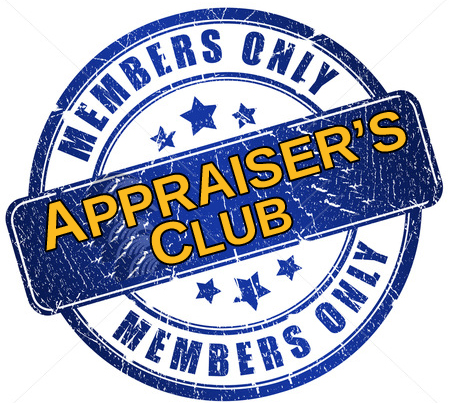| Seasoned appraiser Philip G. Spool discusses the differences between working for AMCs and lenders compared to working for non-lenders.
Editor’s Note: The current edition of Working RE is in the mail. OREP E&O insureds enjoy it free! Transitioning Into Non-Lender Work By Phil Spool, ASA I am fortunate that all of my appraisal work is for non-lenders. I gave up assignments for lenders around 10 years ago and have never looked back. I would say the bulk of my appraisal assignments are from sellers, buyers, Realtors®, attorneys (usually for litigation) and accountants (usually for estate planning).
Every two years since 2003, I teach continuing education classes at Miami-Dade College for appraiser license renewal. I also teach beginning and advanced appraisal courses. Most of my students are Certified Residential appraisers with some Certified General appraisers and trainees. I have a good following of students and most like to interact with other appraisers in class, so I make sure time is set aside. The discussions are often about appraising and the differences between working for AMCs and lenders compared to working for nonlenders. This is the time that those students in the back of the class perk up and actually listen—and even participate. It appears that most of my students would prefer to appraise for non-lenders, yet there is more work available from lenders and AMCs—but at lower fees and faster turnaround time requirements.
Our discussions usually include the types of requirements imposed by AMCs and lenders. What my students sometimes fail to realize is that whether you appraise for lenders directly or through an AMC, or for non-lenders, your research for sales, selection of comparables and the explanation of your subject and comparable sales are basically all the same. The main difference is that lenders and AMCs require more specific choices of comparable sales, pending sales and listings and the photographs used in the report. Many lenders and AMCs require a certain amount of current sales, pending sales and listings within a specific geographical boundary for the comparables, and with specific timeframes for the closed sales—such as three to six months. What you should realize is that some of the best comparable sales are slightly older than the required time period and perhaps in a substitute neighborhood, with sales that are a better comparison to the subject than those available within the subject neighborhood during the time period required. Often, appraisers feel compelled to comply with the lender or AMC and not consider expanding the area and time for better comparable sales. Due to short turnaround time requirements, cutting corners appears to be the norm. This may include doing the minimum to satisfy the lender/AMC in comp selection or the use of boilerplate statements that pertain to the general appraisal process, rather than specifically relating to the subject. Or making boilerplate statements regarding the land (site) value, like “the land value is based on land sales and/or the extraction method” and the replacement cost within the cost approach, which typically states “from local contractors or builders.” From my experience, most appraisers do not have the support for the land value or the replacement cost new in the workfile or in the report. Simply using this type of boilerplate language without actually having the documentation to support it can spell trouble for any appraiser. This can become an issue when facing a lawsuit or a state board complaint. The advantage of appraising for a non-lender is that you have the ability to determine your turnaround time based on your workload rather than the restrictions the lender or AMC requires. When the lender or AMC sets the framework for your appraisal, such as restrictions in the selection of comps or the use of the cost approach when not applicable, etc., they are in essence dictating the Scope of Work (SOW) to you. The SOW should be determined by the appraiser with the understanding of the client. |
|
| Scope of Work No matter who your client is, you should be in control of the SOW. The SOW is defined in the Uniform Standards of Professional Appraisal Practice (USPAP) as “the type and extent of research and analyses in an appraisal or appraisal review assignment.” The SOW Rule is located in the Rules section of USPAP, right after the Preamble Section. It is very important that you read and understand the Scope of Work Rule. This is the basis of your appraisal, of which Standard Rule 1 is the development of the appraisal and Standard Rule 2 is the appraisal report itself. The Scope of Work Rule includes, but is not limited to:1. The extent to which the property is identified;2. The extent to which tangible property is inspected; 3. The type and extent of data researched; and 4. The type and extent of analyses applied to arrive at opinions or conclusions. Who determines the SOW? The appraiser does but the client should be made aware of the four requirements as indicated above. However, it appears that most lenders and AMCs prefer to dictate to the appraiser the SOW and what approaches to value they want. They like to be in control of the appraiser and the work product. On the other hand, the nonlender is usually looking for market value and is not as interested in the specifics of the appraisal report, such as the number of sales and listings (if any) or what approaches to value are needed to arrive at a credible opinion of value. The non-lender is relying on the appraiser to determine the SOW, the choice of sales, and the final value. This is as it should be. You are the expert and that is why they are hiring you. Therefore, you are in control of the SOW and the appraisal process, including whether or not the cost approach is needed. Form Versus Narrative Report USPAP does not state which format to use. Instead of a narrative format, some appraisers opt for the General Purpose Form (GP). While the GP includes most USPAP requirements, the form is not totally compliant with USPAP. For instance, it does not have a pre-printed line in the certification that requires you to state the name of the person providing significant real property appraisal assistance. This statement must be in the signed certification unless it is in an addendum to the certification. On the other hand, the narrative report is created by the appraiser and must include all USPAP requirements. Refer to Standards Rule 2-2 (2) (a) or (b) for the list of what is required. The appraiser must first determine the needs of the client. I find that the narrative format gives the appraiser the ability to better describe the subject and the comparable sales. Many non-lender clients like to read the description of the subject property and comparable sales. Attorneys and accountants find that more important than reading a form report that primarily checks off the boxes. In addition to having the minimum requirements according to USPAP, you should provide other information that your client might need. As the appraisal report is for a non-lender, the appraiser is not required to do everything an AMC or lender wants, including superfluous information not needed by a non-lender. |
|
| A non-lender is not interested in a “head and shoulders” inspection or photographs of running water in a sink. Also, the advantage of non-lender clients is that a trainee can sign the report alongside the supervisor. This is an important feature if you are either a trainee or if you have an office with trainees.
The advantage of preparing the appraisal report on a General Purpose form is that the information within the form report is just about the same information in a FannieMae 1004 or 1073 form and can be quicker to complete and deliver to the client. Again, keep in mind the needs of the client. If you are accustomed to preparing your form report in the UAD (Uniform Appraisal Dataset) format, even with the definitions of the abbreviations, your non-lender client might not understand it. Remember, your client is not a Fannie Mae or an FHA lender. Most non-lender clients would be a potential buyer, seller, agent, attorney or an accountant. They might not understand your description of the view of the subject and comparables as “N,” “B” or “A,” (neutral, beneficial or adverse). Do you think they would want to spend their time going over the definitions so that they can understand that the subject may be in C3 condition and the comparable C4, rather than just stating “above average condition” and “average condition?” The UAD format is designed for the lender and the secondary market, not for a non-lender. In conclusion, many appraisers find that the only advantage for lender/AMC work is that the assignments are more readily available. The advantages for non-lender work include higher fees, longer turnaround times, and the ability to use a trainee, as most lenders or AMCs do not allow the appraiser trainee to sign the report (depending on your client). In today’s valuation environment, appraisers would be wise to diversify at least part of their business into non-lender work. |
1st
May
2018
Transitioning Into Non-Lender Work
posted in Appraiser Marketing |Categories
- Appraisal Management Companies (52)
- Appraisal Process Training (14)
- Appraiser Jobs (24)
- Appraiser Marketing (69)
- Appraiser News (337)
- Appraiser News (9)
- Appraisers Directory (1)
- Become Appraiser (4)
- Blogroll (2)
- Dodd-Frank C&R Topics (28)
- Podcasts (13)
- Resources (2)
- State Licensing Boards (1)
- The Busy Appraiser Podcast (12)

Appraisal Management Company Directory
Now with 200+ AMCs listed
Top 46 companies list send me 90% of all my AMC work.
Order Today!

Non-Lender Marketing Guide
NEW Appraiser Marketing Guide and List of 11,000+ Direct Lenders, Credit Unions and Bail Bond Companies
Order Today!
Get them both together and SAVE!
 |
|
|
|
Buy Guides Here

No More Middlemen & AMC Directory
Get both Directories and we will even throw in a copy of the Maximizing AMC Orders and Income eBook for free! Significantly Discounted and on SALE right now. Original Cost for all 3 = $184.95 Price: $144.95 - Electronic Versions Only

Appraisal Management Company Directory
and additional chapters on recession proofing your appraisal business, getting more estate appraisal requests and search engine marketing. First 37 on the list send the most work, First 10 on the list are currently my BEST clients.

Non-Lender Marketing Guide & Spreadsheets
Appraiser Marketing Guide and List of 11,000+ Direct Lenders, Credit Unions and Bail Bond Companies. Get off the AMC roller coaster ride for good!

Latest Posts
- Appraising Short Term Rentals
- Appraiser Job in Baltimore, MD
- Appraisal Orders : Coming soon in 2024!
- Happy Holidays!
- HUD Appraiser – Job Baltimore, MD Boston, MA New York, NY
- Getting more appraisal work with Yelp reviews
- Real Estate Appraiser Jobs with the Internal Revenue Service
- 2023 Appraisal Management Company Directory NOW AVAILABLE
- Review Appraiser Jobs with HUD
- Lead Appraiser Jobs with Dept of the Treasury

